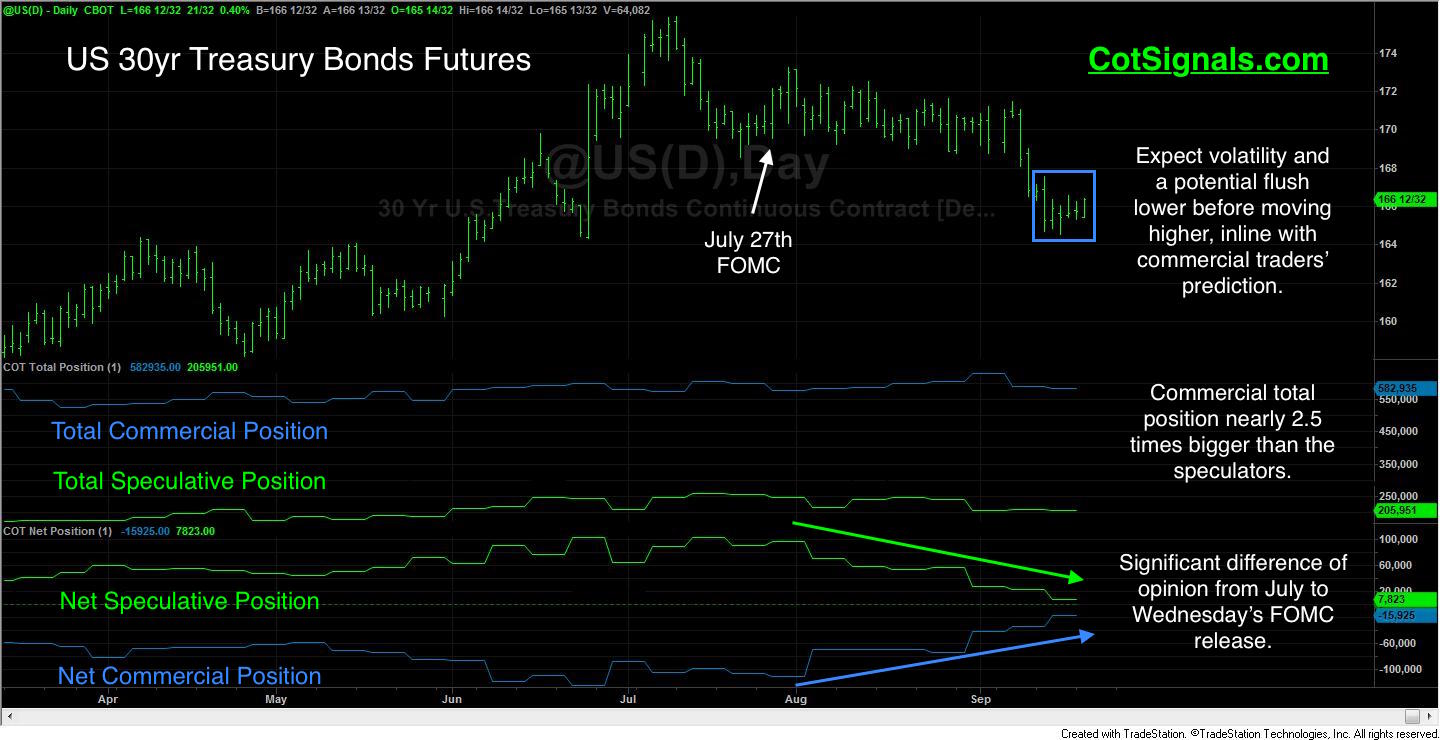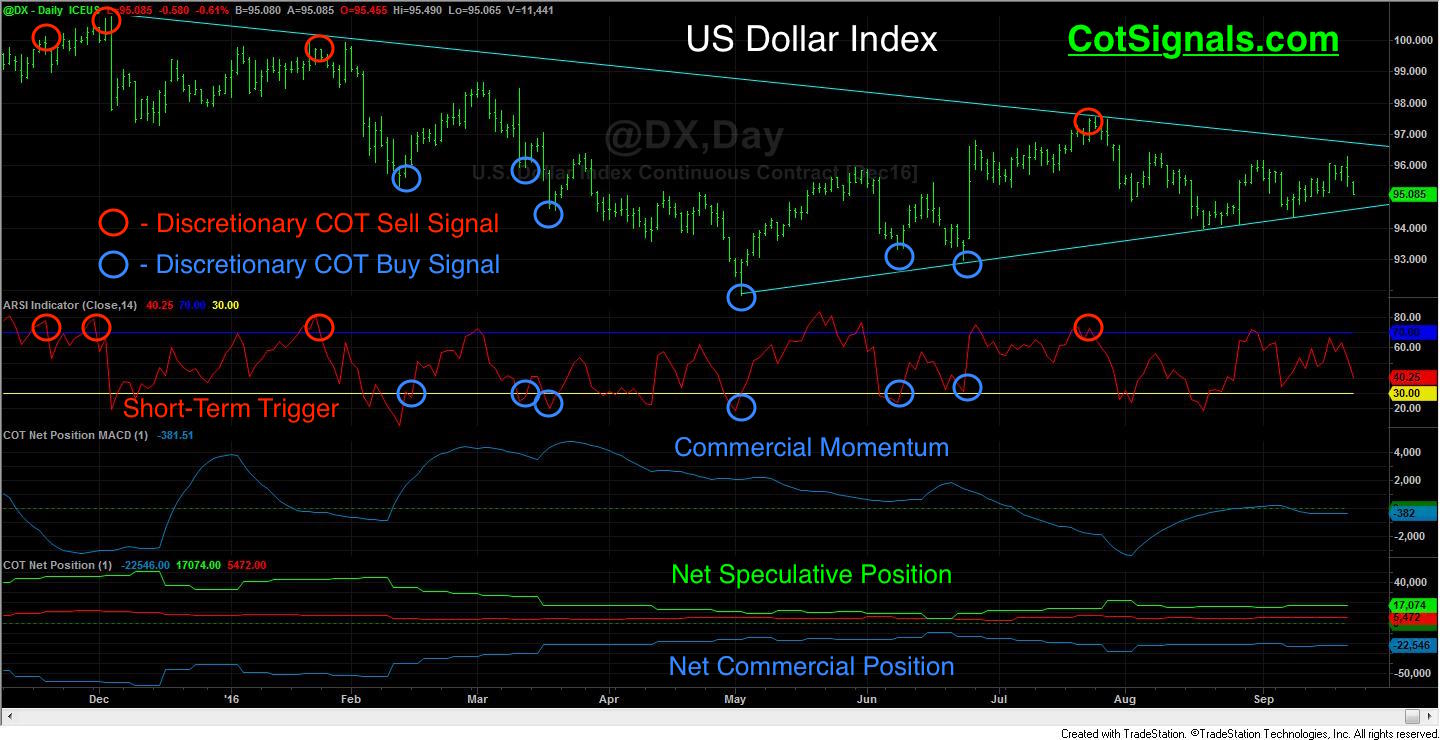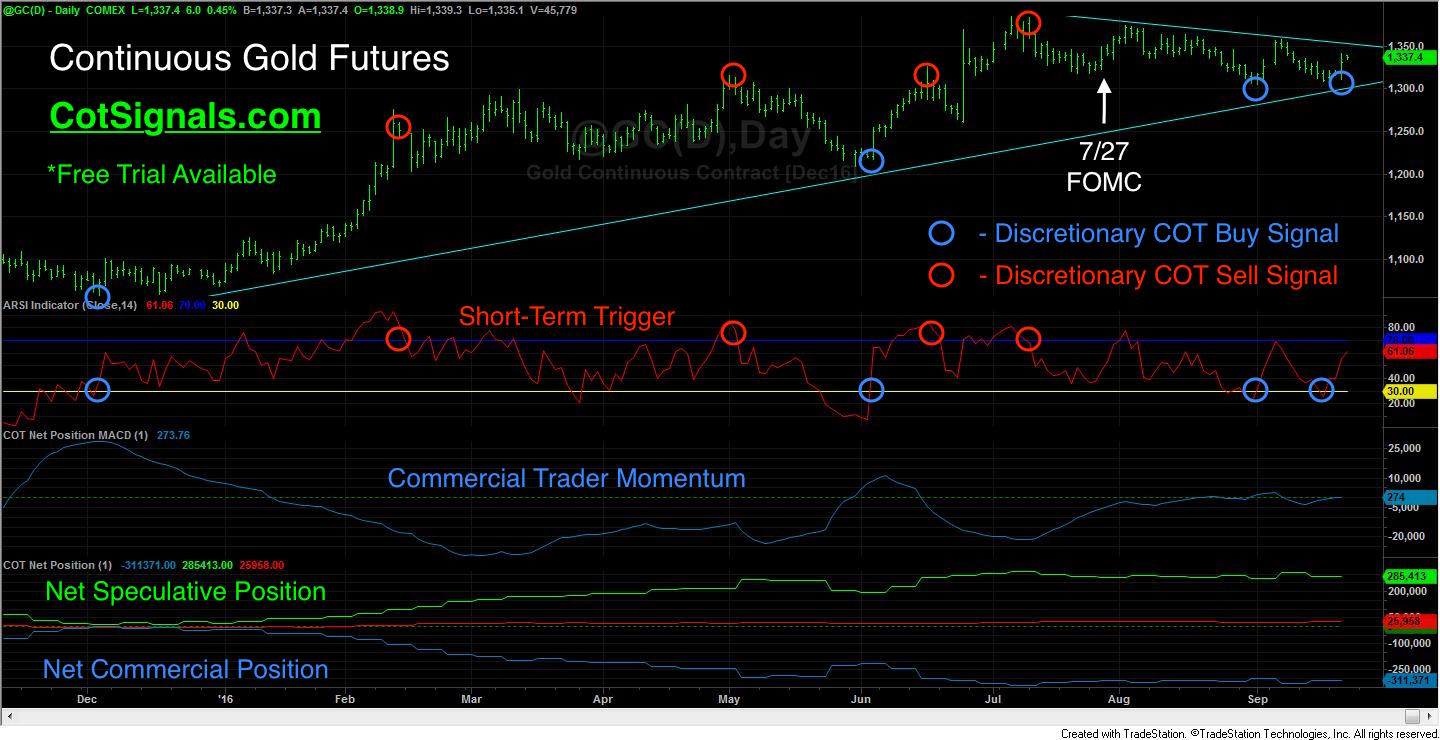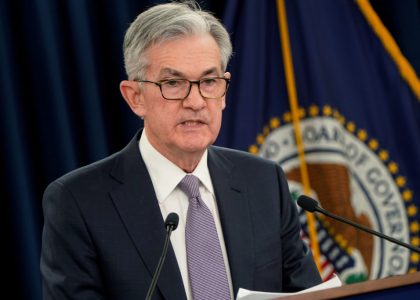Given the weight recent financial announcements have carried like those from the ECB, BOJ and here at home, the FOMC, would it seem odd to think that as a trader, I could've cared less what the numbers were or, the puppets said? The point is that we don't trade the numbers, reports or announcements. We trade the underlying markets affected by the numbers, reports or announcements. Therefore, we're less interested in the outcome of the meetings or, the most recent data points and more interested in the expected market action following the announcement's release. Today, we'll use the Commitments of Traders (COT) reports explaining how traders can take advantage of an internal market imbalance in the underlying contract to capitalize on important financial announcements.
First of all, let's define the players on the following charts. The commercial traders' actions are shown in blue while the large speculators' actions are shown in green. The commercial traders are the group we follow. Twenty-five years ago when I first began my COT research, it made sense that the actions of those pulling a commodity out of the ground or, processing that commodity further down the line, would provide a proxy for underlying value in the markets they trade. I find that this is still true today. What I didn't expect to find was that the commercial trader category also provides a viable proxy for value in the financial markets. Theoretically, this makes sense as the actions being taken in the financial markets by the commercial traders are based on the same set of principles as they are in the agricultural markets. The commercial traders use market movement to enhance the returns of the businesses they run. They do this on the production side by selling future production when prices are over-valued, while on the long side, they buy in future production inputs at below value prices.
The large speculators, on the other hand, come and go as they please and are simply along for the ride. This doesn't mean the large speculators don't provide analysis value. There are two keys to large speculator behavior. First, the large speculator category is primarily made up of managed money. Without knocking the money managers, they're subject to the investment whims of the general public. Therefore, when a market gets hot and attracts money, like gold, the managers have little choice but to place their client's money in the positions their clients want. It is the irrational individual investors chasing returns that put the managers in a tough spot. Fortunately for us, we can see the bubbles building as the speculative money is invested. The second key to speculative behavior has to do with capacity. Any physical commodity market only has so much capacity, which is interesting because theoretically, open interest in the commodity markets is infinite. The point is that once the hedging needs of an industry have been met, that group takes no further action. This can leave the speculators in charge and create a bubble run. We track the total position of the commercial category to determine the market's capacity and use a ratio of speculators' positions to determine how speculatively overbought or, oversold a given market may be a precursor to making our own trading decisions.
On to the current setup. There has been a tremendous change of opinion in the commercial traders' expectations of interest rates since the July 27th meeting. In our monthly Commitments of Traders column for the October issue Modern Trader magazine we noted that commercial traders in the 30yr Treasury Bond had set a record net-short position in late June, surpassing their net short record total from 2008. This pattern also persisted in gold where commercial traders set a new net-short record position in early July. Now, note on the bond chart below how rapidly things have changed.

We published the above chart at Equities.com ahead of Wednesday's report to show people the dramatic reversal of thought among the traders we refer to as a proxy for which side of the market we should trade. Also, note the nearly symmetrical decline in the speculative long position as the market declined. Finally, note that the commercial traders' position is more than 2.5 times larger than the speculative position and you'll understand its weighting. The convergence of positions led us to a strong belief that regardless of the FOMC decision, and selloff would be brief. We noted specifically that, "Given the market’s expected degree of volatility, I wouldn’t be the least surprised if the market attempted to spike lower before the commercial traders come in and scoop up more 30yr T-Bonds at the bargain prices at which they clearly believe we’re trading. We expect to use their support to create a buying opportunity of our own and will watch the long side of the market accordingly." Obviously, the commercial traders were correct in their forecast of near-term price movement following the FOMC's announcement.
The FOMC's decision to leave interest rates unchanged struck a blow to the US Dollar. Notice that the commercial traders were buyers heading into the July FOMC meeting. In fact, between the Brexit vote and the FOMC's potential to raise interest rates, we saw the commercial traders reach their most bullish position in more than two years by late June. However, since that time, the commercial traders have more than doubled the size of their net-short position. Once again, this was in character with their recent move on bonds as interest rates are too low to cover make up for currency depreciation. this has left the commercial traders looking for moves in price; higher in Bonds and lower in the US Dollar.

Finally, this brings us to the gold market. As yields continue to fall and the US Dollar declines, it makes all the economic sense in the world that gold rallies the FOMC's comments push inflation off to some point in the future.

The graphic depiction isn't as startling as the Bond market's chart but, it basically says the same thing. Commercial traders were inflationary heading into the July meeting but have changed their tune since. As we stated in our COT column, commercial traders set a new record short position in early July. This coincided with their Bond and Dollar positions to put us on the lookout for inflation. and indeed, our last short gold position was taken when the commercial traders set their record short position. However, just when we thought the market was falling through $1,300 per ounce, the commercial traders decided to turn to the buy side. We covered the short position and watched as they've built up support at the bottom end of this range. Given the size of their still, net-short position, we believe the gold market could easily push through the high end of the congestion defined by the downward sloping trendline, now at $1,353.
These three markets have provided a great real-time example of how the individual groups within the Commitments of Traders report can be used to define a broad trading plan as the macro scene shifts. We use this as our first screening method, only taking trades in line with the commercial traders' momentum. More often than not, that puts us on the right side of the market, especially on volatile, news event driven days.
For more information on our methodology and the mechanical and discretionary trading signals it generates, please visit CotSignals.com.






